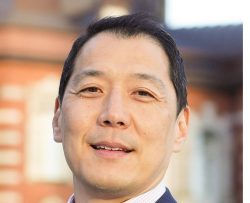Measures against Regional Imbalance of Doctors: Consider Adjusting Medical Workplaces
16:32 JST, October 26, 2024
While doctors are concentrated in large cities, the shortage of doctors in regional areas has not been resolved. The government should take effective measures to solve this longstanding issue.
Although the number of doctors is increasing every year as a whole, various regions are facing the problem of doctor shortages because there is a serious regional disparity in the number. The shortage is particularly noticeable in eastern Japan prefectures, including Iwate, Aomori and Niigata.
The problem is not limited to regional disparity. There is also an uneven distribution among clinical departments. Fields such as surgery and obstetrics, which tend to require a lot of overtime, tend to be shunned by doctors. On the other hand, there is a recent trend for young doctors to move into cosmetic medicine, which is not covered by public insurance.
There is also an uneven distribution in which there are many doctors who run their own clinics, but there are not enough doctors working in hospitals to treat seriously ill patients.
For many years, the personnel shortage has been compensated for by some doctors working long hours. However, a law related to work-style reform has been applied to doctors since April this year, and their overtime is now strictly regulated. Medical institutions can no longer rely on some doctors working long hours as they did in the past.
So far, the government has taken measures to encourage doctors to move to regional areas through such means as introducing a system in which “regional quotas” are set at universities’ medical school entrance exams that requires graduates to work in regional areas for a certain period of time. However, such measures have not been enough to fully eliminate the regional imbalance in the number of doctors.
Even though, in principle, doctors are free to choose their clinical departments and workplaces, they bear a heavy social responsibility. The problem will not be solved if they are left totally free to decide.
To create a system in which everyone can receive medical services with peace of mind, it is inevitable that certain restrictions be placed on doctors’ choices.
An important issue for consideration is how the government should support the management of medical institutions that contribute to areas where there is a shortage of doctors.
Last month, the Health, Labor and Welfare Ministry established a task force to promote measures to address the issue. It intends to compile specific measures by the end of the year.
There are various reasons for the regional imbalance in the number of doctors. It is hoped that the task force will identify the points to be discussed from a variety of angles and tackle the challenges.
In urban areas, where there are many private clinics, one option is to introduce a permit system for opening new clinics. Another option is to require doctors to have experience working in areas that have a shortage of doctors before they can become a director of a clinic.
The government needs to know exactly how many doctors are needed in each region and in what departments. Based on that knowledge, it is important to systematically allocate doctors.
As the population continues to age, medical needs will only increase. If the regional imbalance of doctors is not corrected promptly, there could be a situation in which patients are not able to receive the treatments they need.
(From The Yomiuri Shimbun, Oct. 26, 2024)
"Editorial & Columns" POPULAR ARTICLE
-

Violations of Subcontract Law: Major Automakers Must Eliminate Old Practices
-

Local Governments’ Tax Revenues: Devise Ways to Correct Imbalances in Tax Sources
-

5 Japanese Business Dinner Mistakes to Avoid — and What They Taught Me About Business in Japan
-

Heavy Rains in Asia: Support for Victims, Flood-Control Measures Urgently Needed
-

Rice Coupons: A Misguided Approach to Countering Rising Prices
JN ACCESS RANKING
-

Keidanren Chairman Yoshinobu Tsutsui Visits Kashiwazaki-Kariwa Nuclear Power Plant; Inspects New Emergency Safety System
-

Imports of Rare Earths from China Facing Delays, May Be Caused by Deterioration of Japan-China Relations
-

University of Tokyo Professor Discusses Japanese Economic Security in Interview Ahead of Forum
-

Japan Pulls out of Vietnam Nuclear Project, Complicating Hanoi’s Power Plans
-

Govt Aims to Expand NISA Program Lineup, Abolish Age Restriction


















